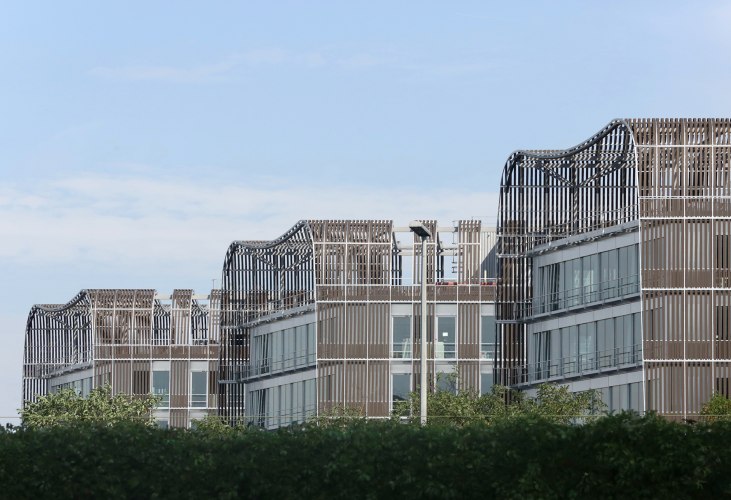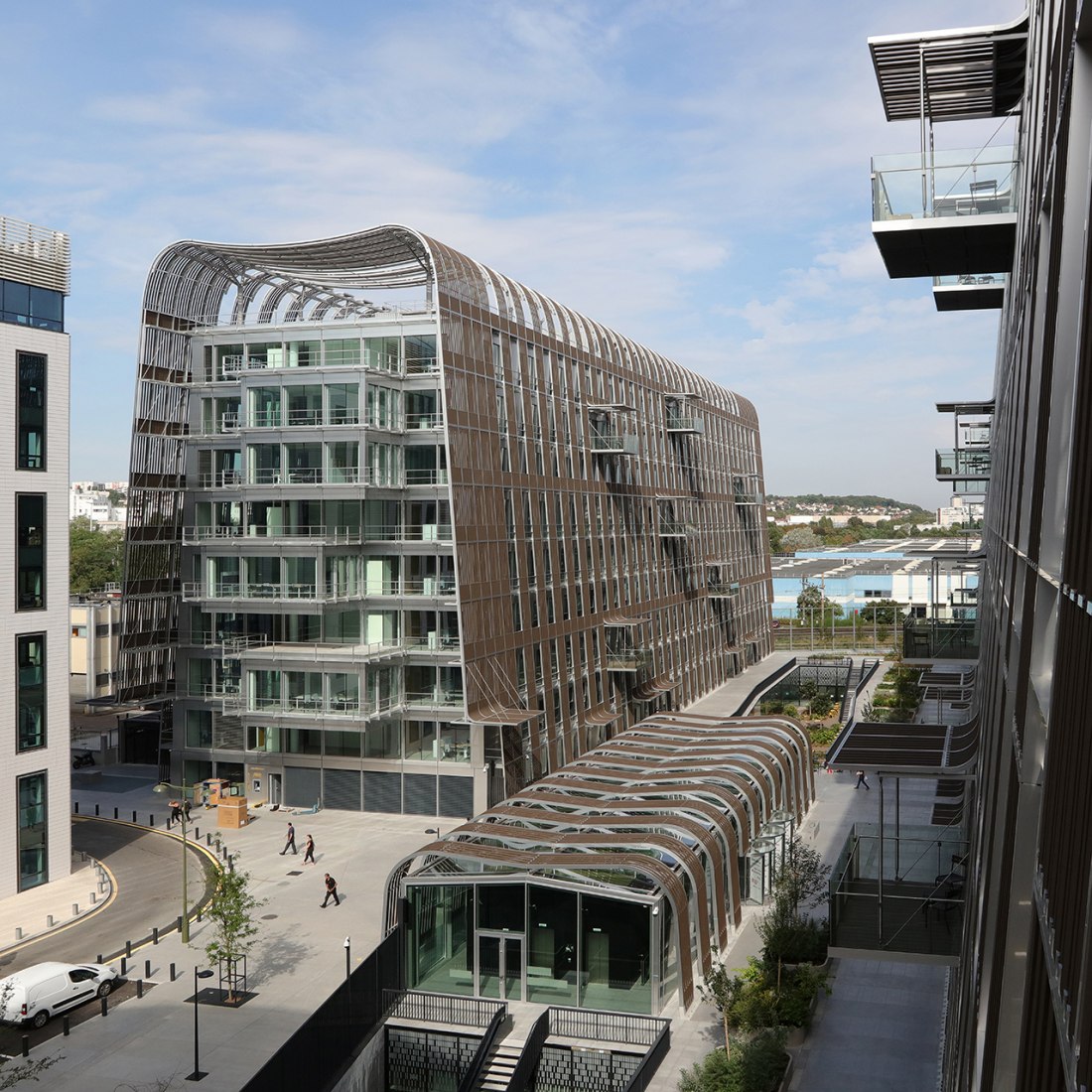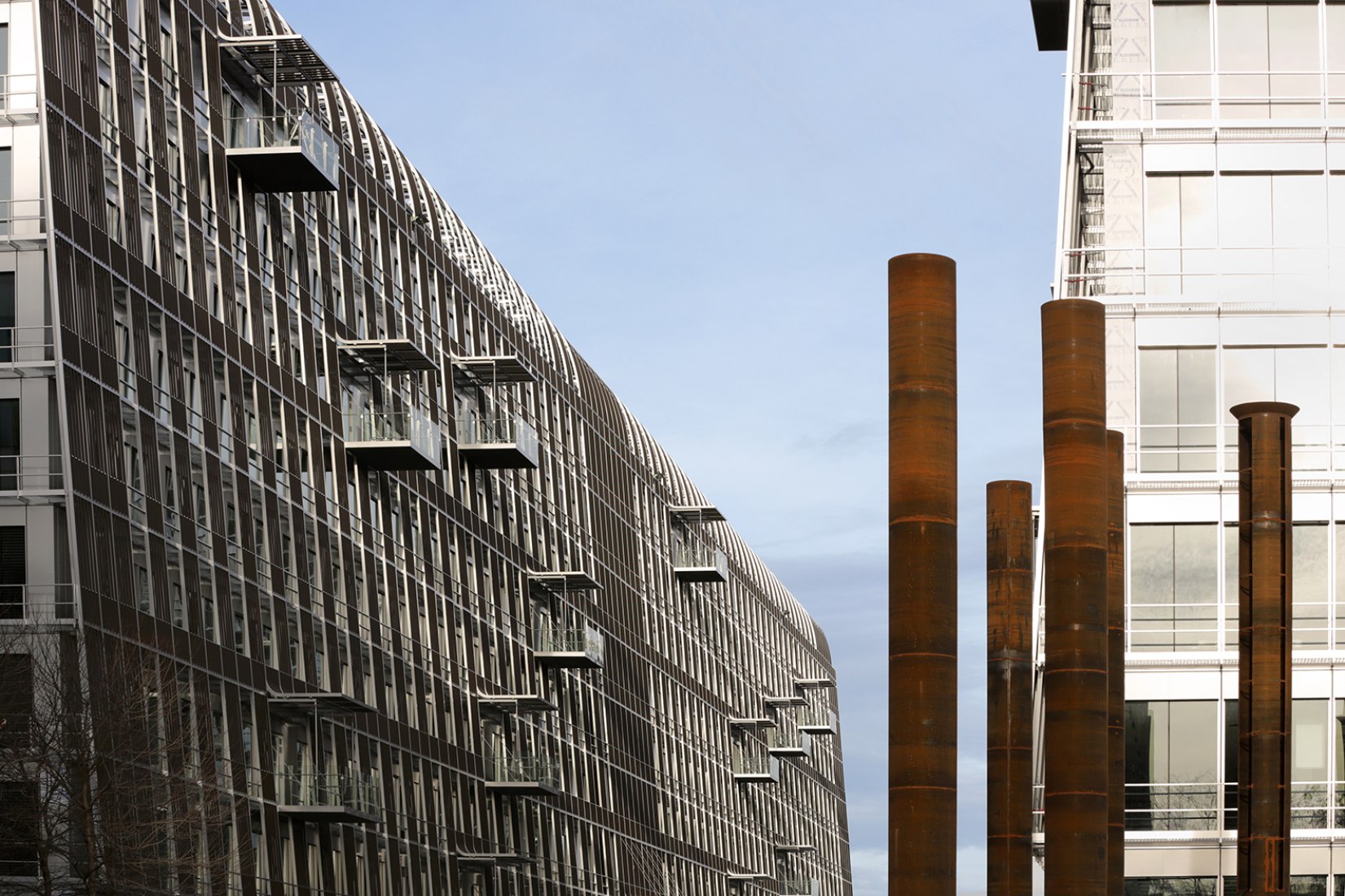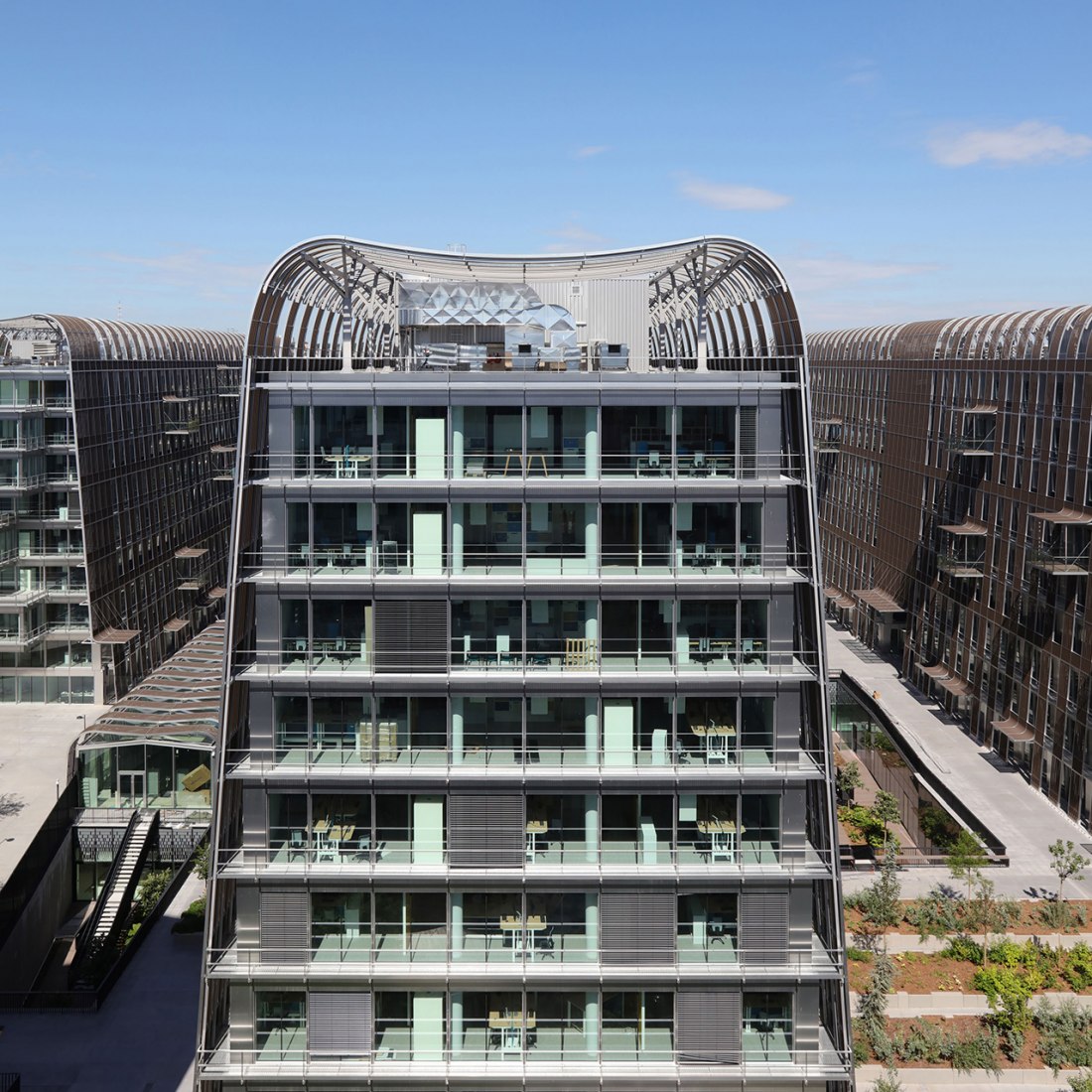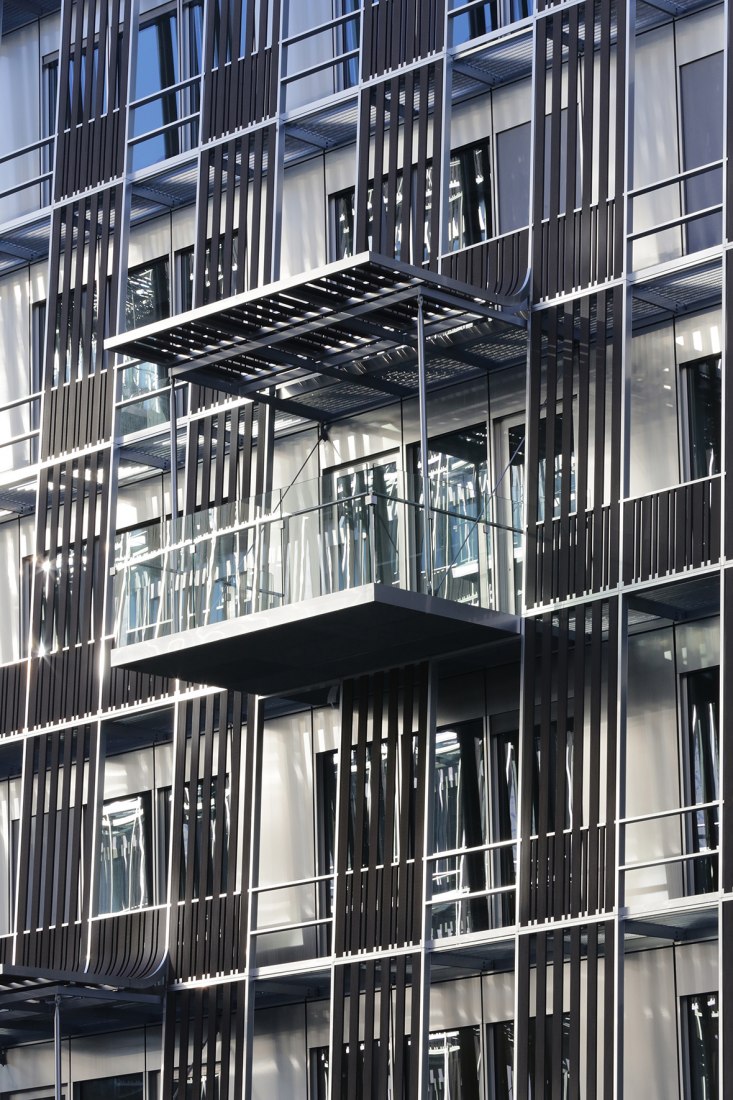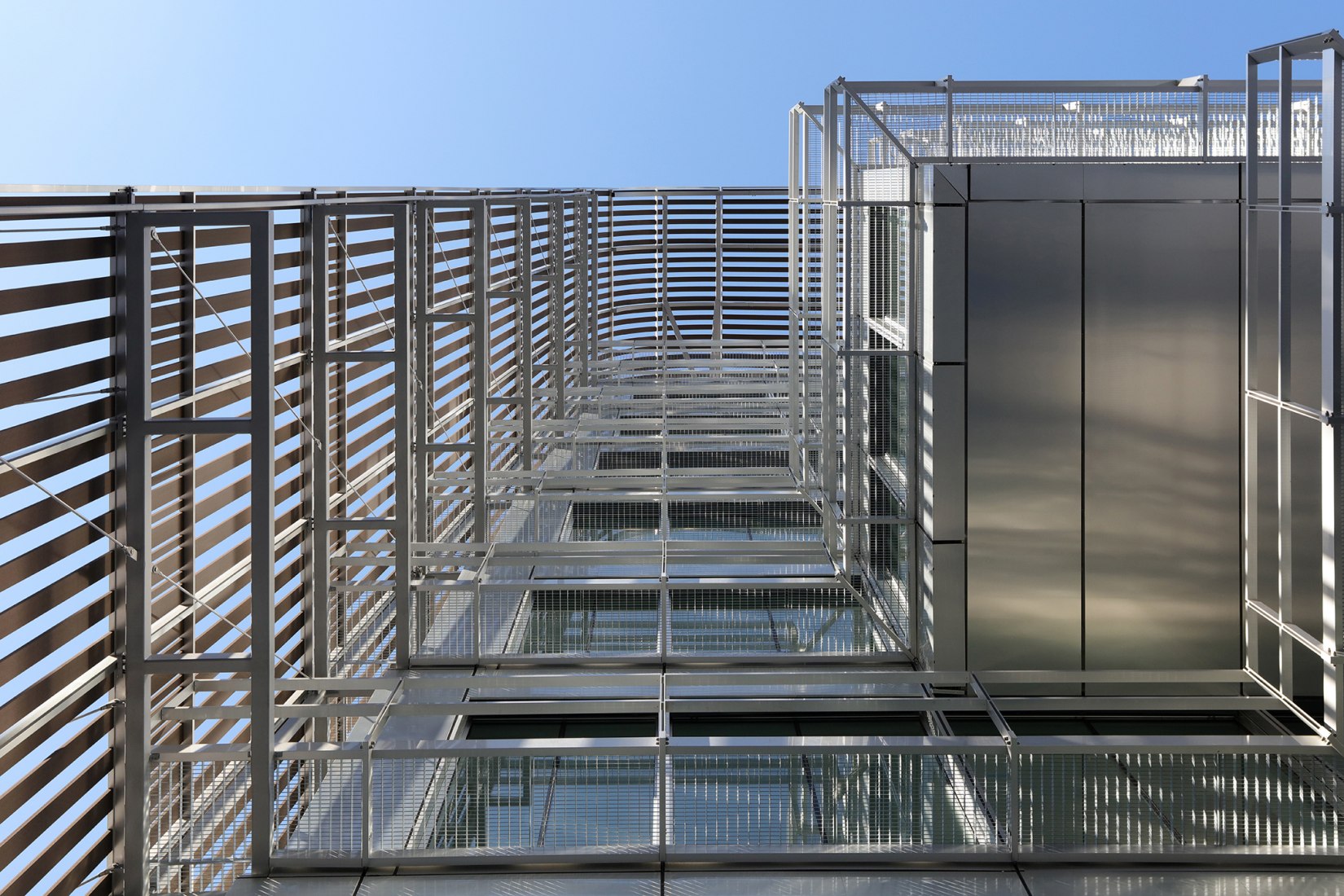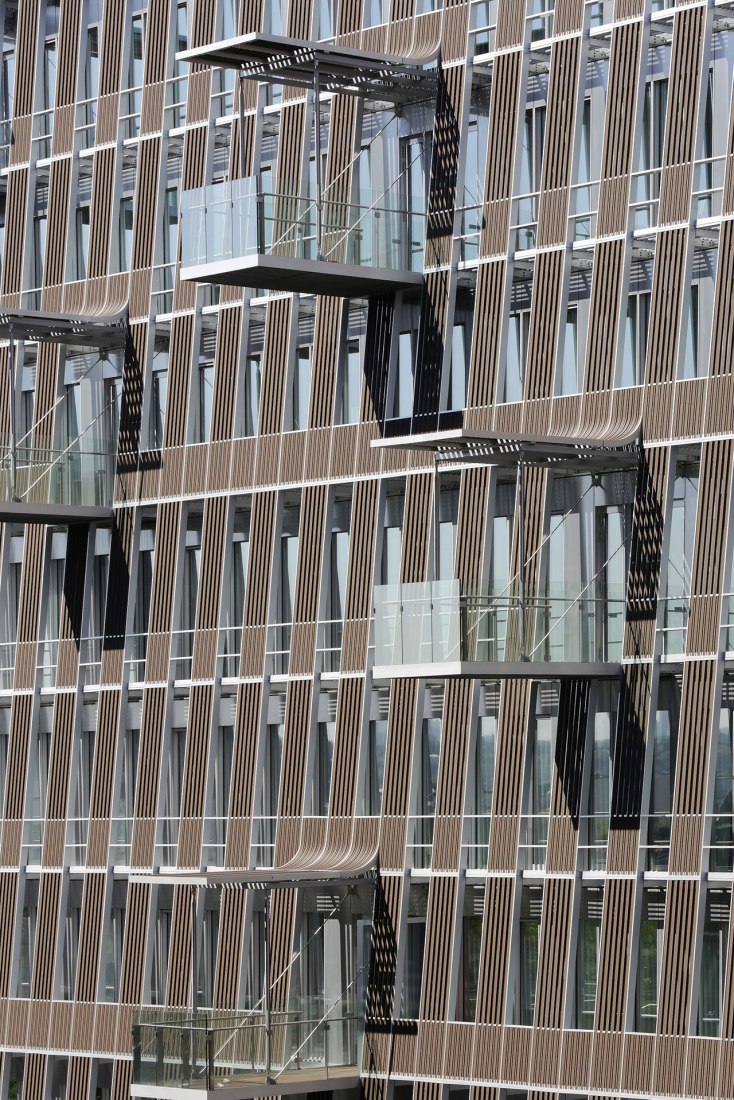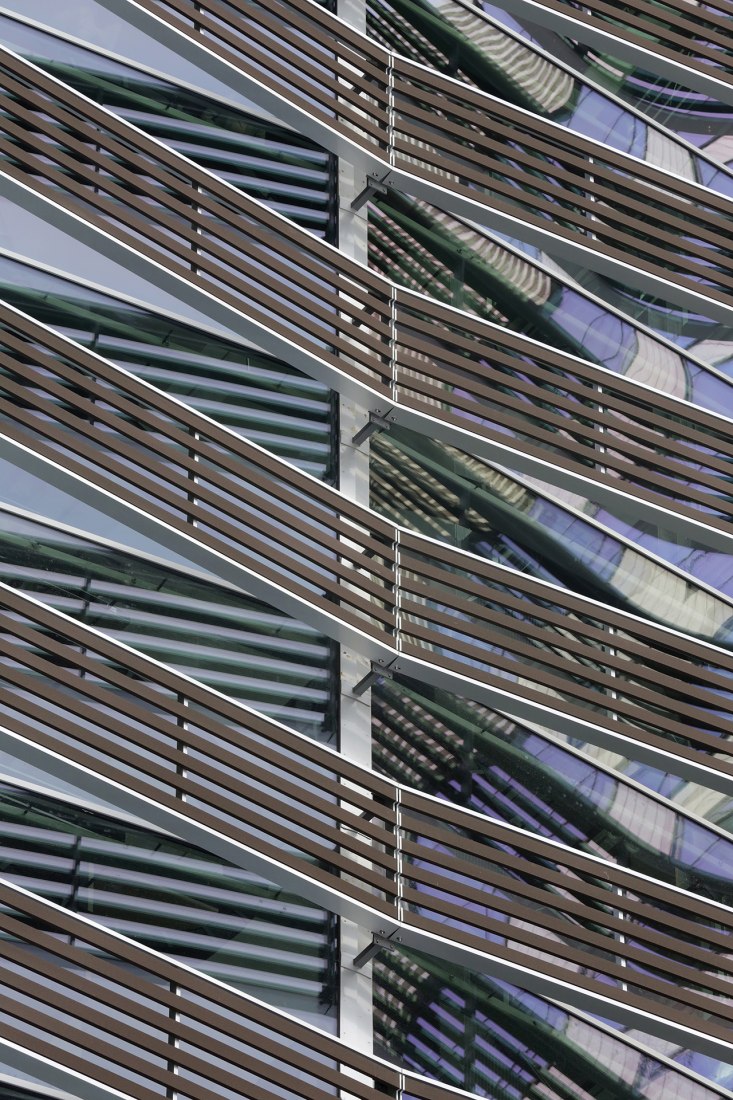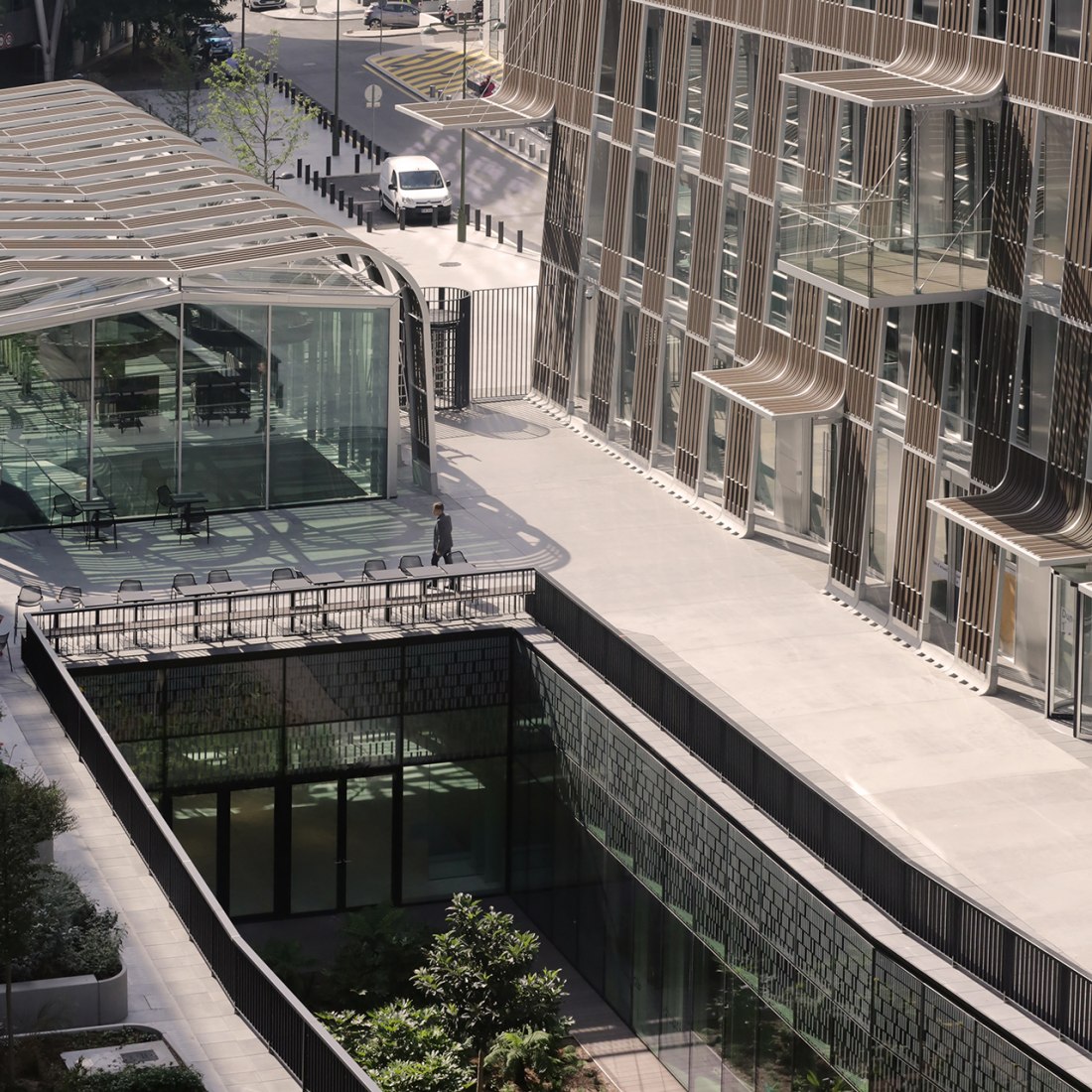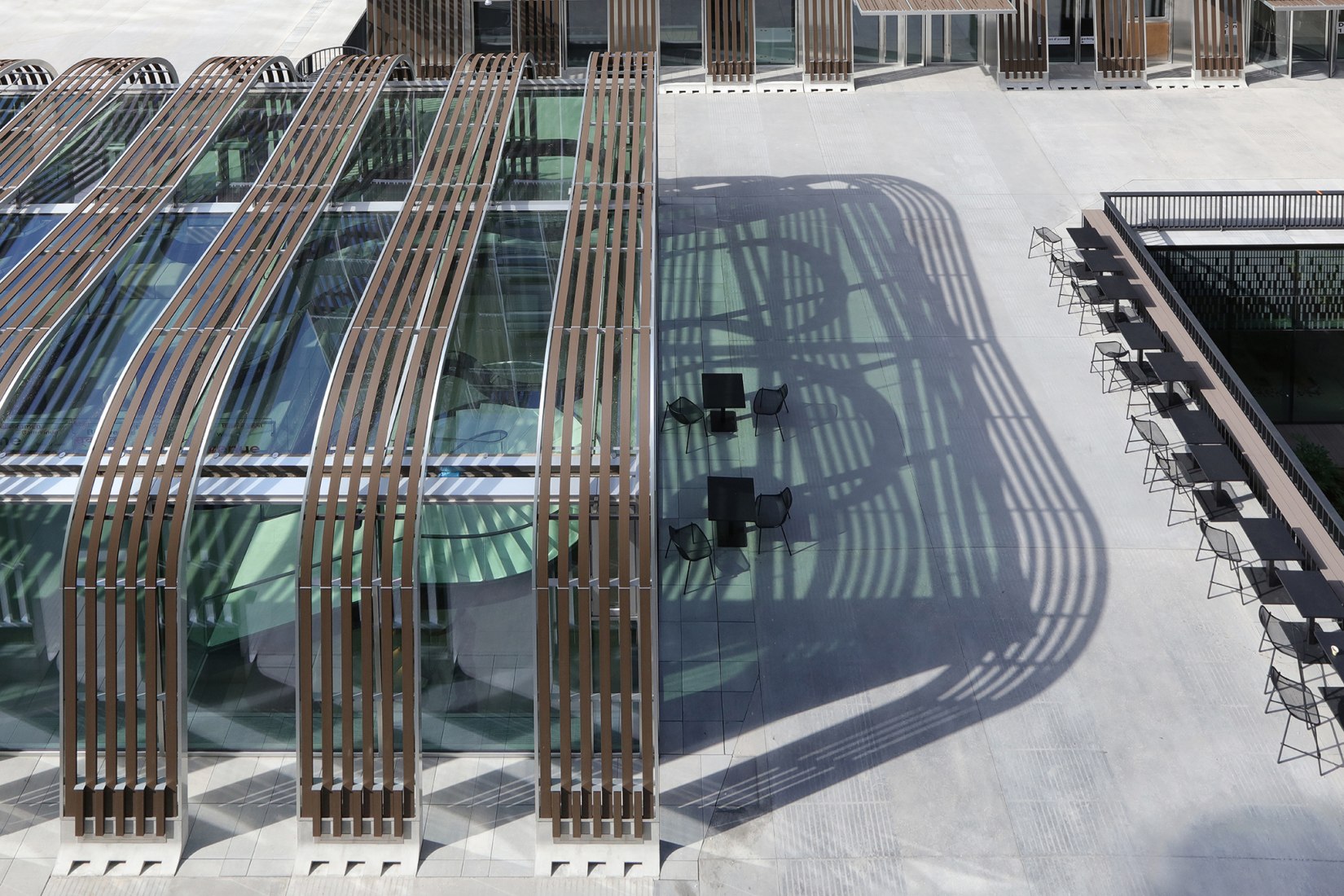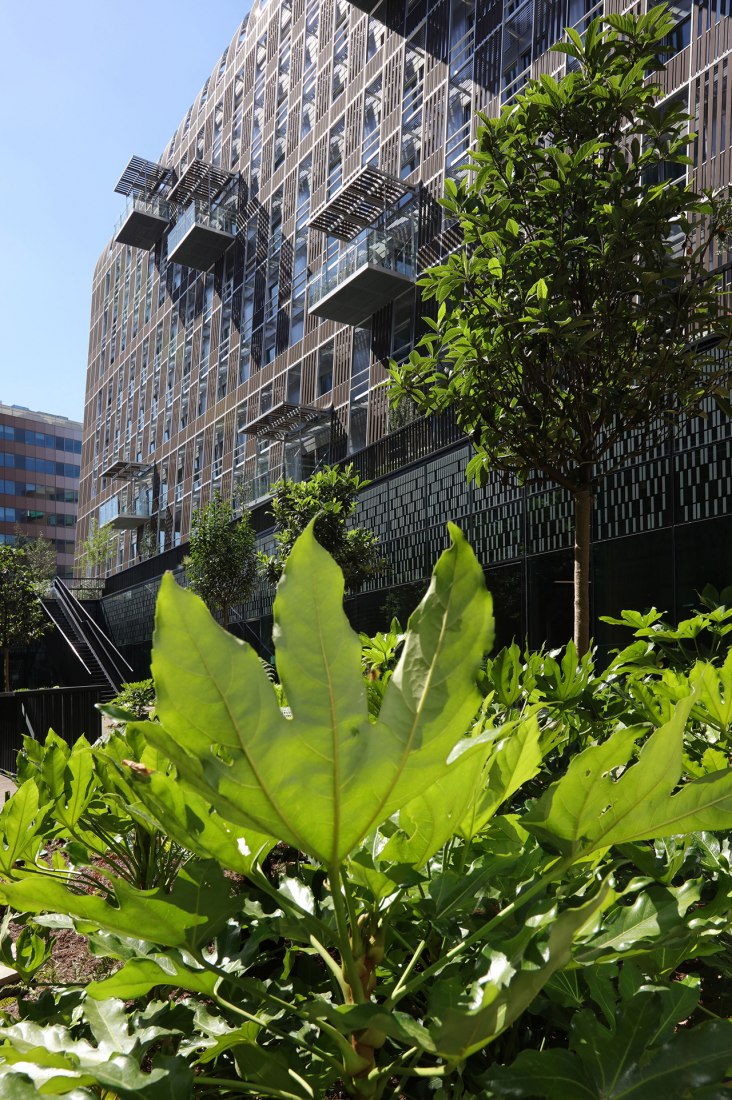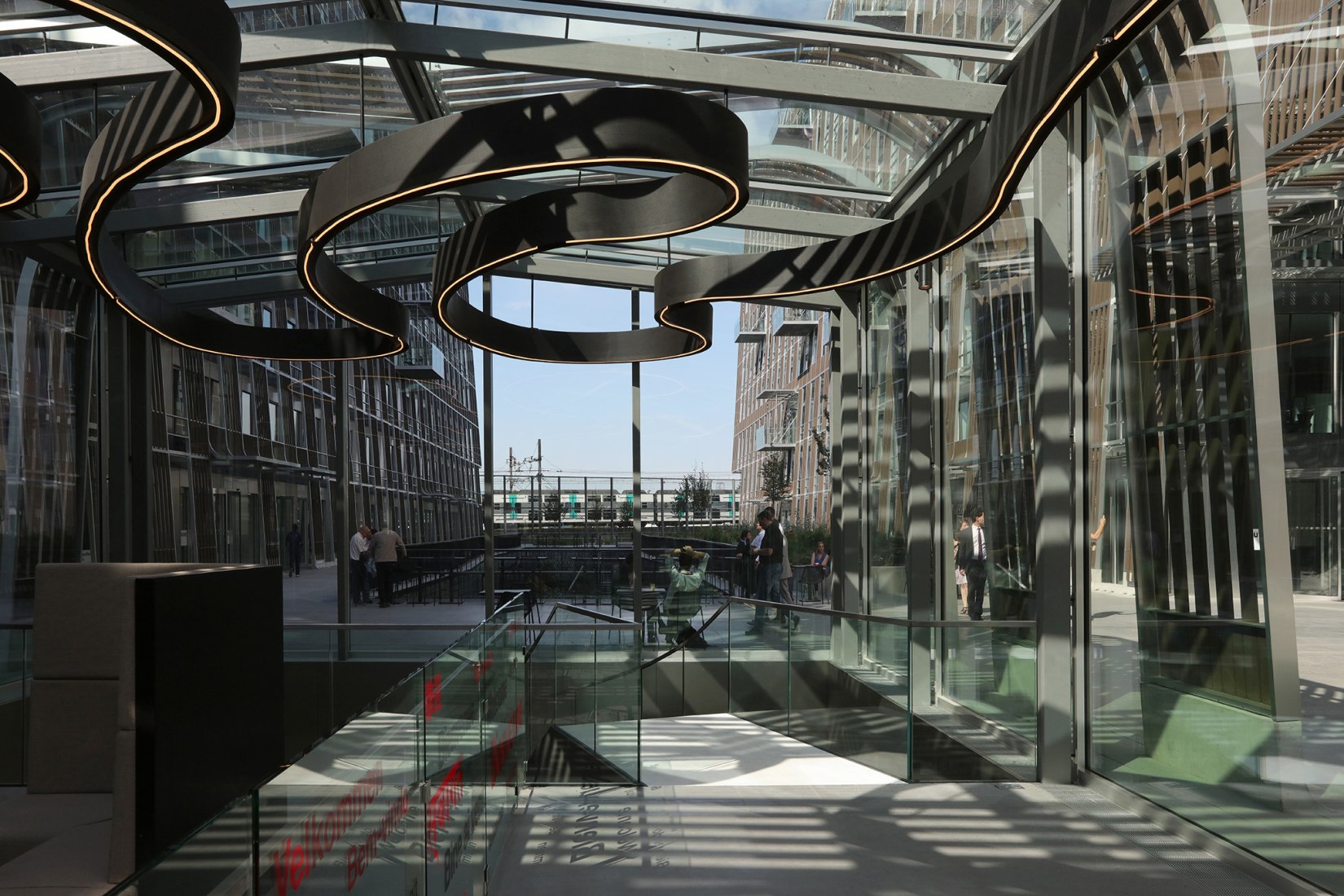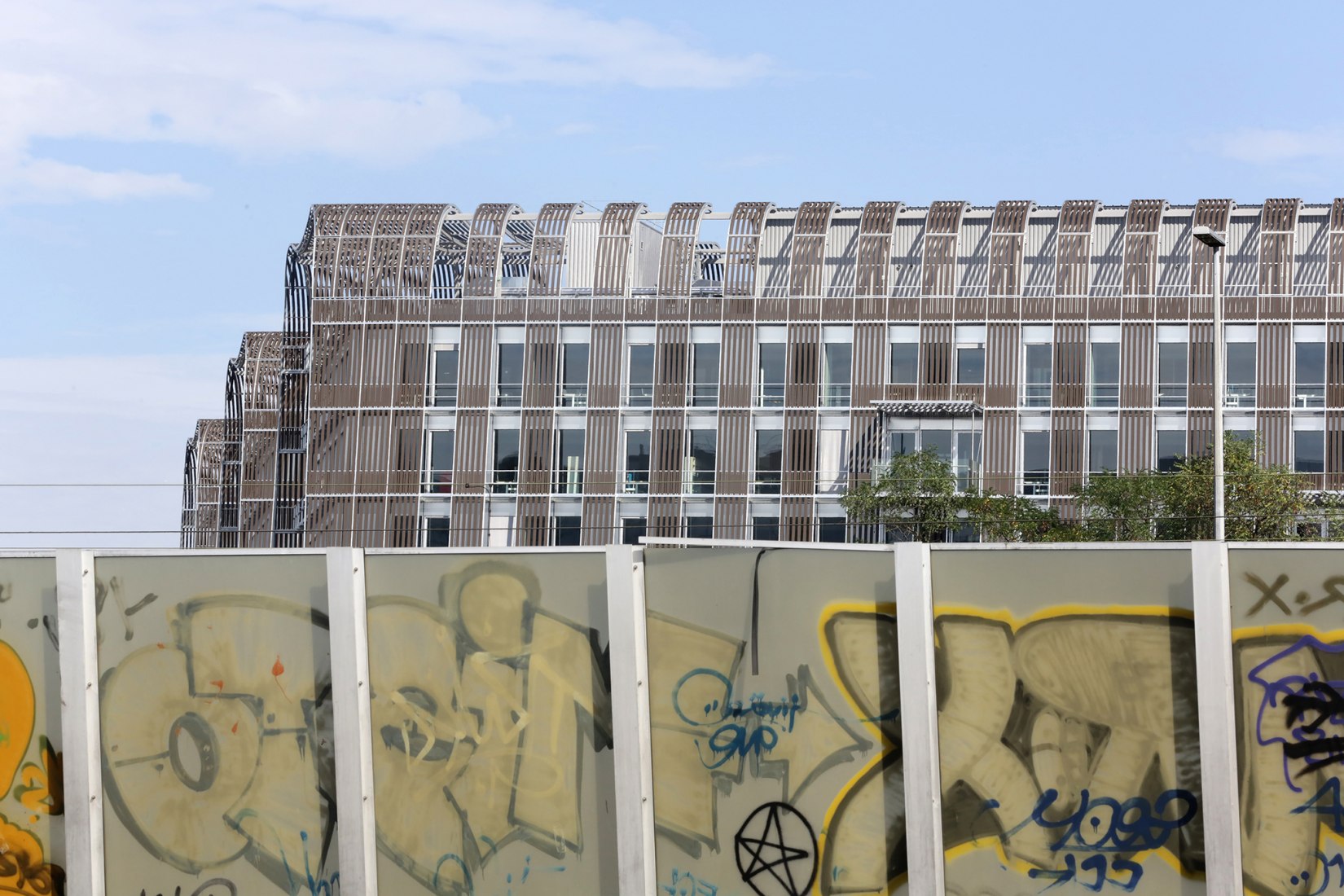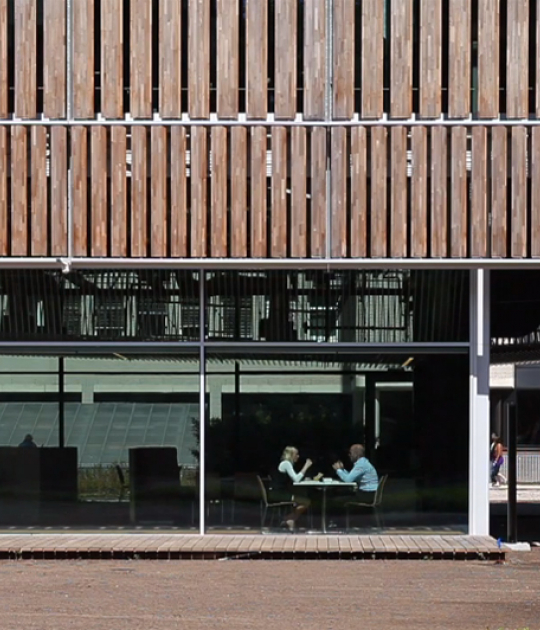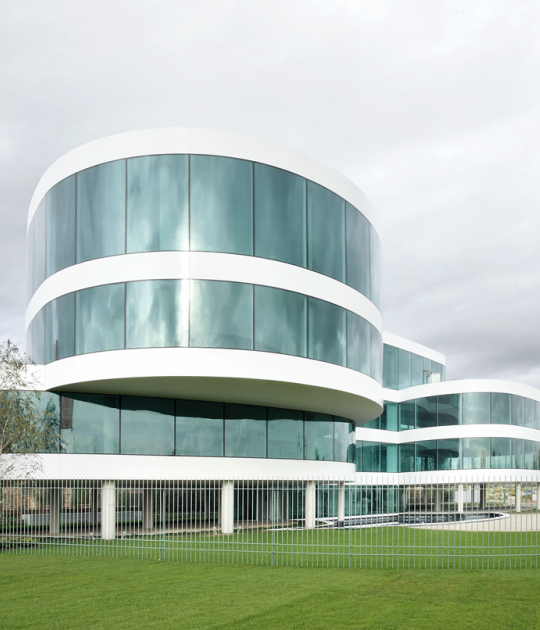INTERNET’S INFLUENCE ON TERTIARY INNOVATION
Following two decades of technological upheaval directly related to the Internet, changes in society have emerged with their consequences on our ways of living. Heralding a new era, digital tools profoundly boost individual and social exchanges and modes of expression. Our working attitudes are thus modified and our relationship to space is shaken. This digital transition impacts work relations and manifests itself in the office, but how are they (re)drawn?
The new division of Société Générale in Val de Fontenay, in eastern Paris, responds to this strategic challenge common to many large corporations. It is emblematic of the digital transformation of the banking sector as a whole. It is called Les Dunes, listed as a «marker»/»reference point» in the commercial real estate sector. Winner of the international competition launched in 2011 by the banking group, architect Anne Démians designed these 90,000 square meters of office space that is shortly due to welcome 5,000 employees.
THE TRANSITION TO DIGITAL : AN OPPORTUNITY
The birth of this creation is directly related to the evolution of Société Générale and the symbolic importance it accords to its adaptation to the infotech world and to its change of management. At the turn of 2010, this banking establishment - created 150 years ago, presentin over 76 countries, serving 30 million customers - is reorganizing itself with the priority of recentering its business model within the context of the new global economy.
Françoise Mercadal-Delasalles, Director of Resources and Innovation of Société Générale Group, is responsible for implementing these managerial and spatial changes, inevitable, as this process requires a precise qualification of the utilization of collectively used spaces.
As this member of Société Générale Group’s Executive Committee wrote in a manifesto published in the Journal of Financial Economics [No. 120 - December 2015] «We must observe how the digital relationship has changed our physical relation to work. Coming to a soulless office in the morning to plunge head first into a computer alone behind a desk, or worse, in the middle of an open space, no longer makes any sense. Coming to the office has to provide something more. New workplaces will respond to the human need for warmth and sharing. To meet the challenge of this change, the very piloting of this gigantic project must integrate the concepts and methods of our digital age: co-creation, collaboration and cooperation.»
THE GENESIS OF THE PROJECT
The analysis of this competition and its technical specifications illustrates Société Générale’s willingness to carve out this project of a disruptive nature from the ongoing transition and the opportunities it affords.
Through his exchanges with Académie Française member Michel Serres, François Mercadal-Delasalles wholeheartedly embraced the philosophy that states «every major rupture in the history of humanity led to depriving mankind of faculties, but every revolution brings new ones. With the widespread diffusion of information technology, it gains a new set of individual, group, network and knowledge connections and with these, an ability to multiply invention and creation.»
Completely lucid concerning the bet he accepted - relational intelligence as a response to the erasure of our pyramidical schemes - the banking group had to design a new tertiary world. His initial premise provides three guidelines to his program:
- To construct twenty-first century office spaces with good/clean energy performance, spaces adapted to the expectations of the new generations of workers in terms of reversibility and modularity, up to and including the company’s canteen.
- Build an entire workspace «made for people»./- Build an entirely «people-centered» workspace.
Because she has been innovating in tertiary properties for the last ten years, Anne Démians sees this competition as a means of continuing her quest to innovate within the urban territory. She created a «landscaped building» for the Société Générale which is characterized by something totally compatible with our digital age. This is a pioneering architectural act that prefigures the mobility of the immobile.
Project description by Anne Démians.
The facades become highly sophisticated technological objects, to the point of finding a unique relationship with the interior, itself modified by the mass intrusion of a digitally born spirit. Our behavior, in relation to how we work, is obviously different. With infotech, we have less need for daylight, while needs relating to comfort or ergonomics are integrated with, however, a superior rendition in production.
For several years now we have seen dramatic changes to our ways of living and working. What I propose in this project is firstly to consider the question of materials. There is this great idea that through the evolution of a facade, there may be new materials to explore, other than those with which we’ve been filling our sketchbooks for years.
Until this project, Société Genérale used metal and glass in all its constructions. Here, the idea is that if a man takes his place at the heart of such a collegial and productive operation as a bank, there must be a manner of expressing it materially.
The proliferation of functional layers that comprise the facade, including the one more present, wood (a reconstituted wood that needs no maintenance) gives more depth of field to the eye. This wood does not exist in Europe and it was only after several months of research in Japan that I could fully understand all of its qualities. So I travelled to Japan meet its Japanese manufacturers who, perhaps because of their insular fragility, are several years ahead of Europe in terms of industrial research.
This wood is 100% reconstituted from recycled wood, and is, itself, 100% recyclable. And we imported it to propose it as a major and communicative symbol of this new project. The stakes were high. More than 200 kms of wood had to be posed in the form of wood strips.
It is a real concern to produce and build consistency and to ensure that the architecture itself is a true act of intelligent production.
There is the passive dimension of the proposed entities. 90,000 m2, three buildings, oriented east/west and south-facing gardens. The terrain was 23,000 m2 for 100,000 m2 of construction. I had the idea of folding the terrain up, like a sheet of paper and of creating three waves that would contain the essential part of the surfaces. Between them, a herbarium, gardens and wood on the ground to give the feeling of continuing the same universe.
Two scales are positioned in complementarity. They support this stated need to of a reconstructed nature, in relation to light, strongly present in every part of the structure. Patios are integrated in a lower floor of protected and shared spaces. Because, with no fewer than 5,500 people expected in this location, the goal was to create constantly evolving work and meeting spaces. A central pavilion and an indoor street contain a Business Center and cafeterias / cafés. Almost 13,000 m2 of space is available to the company.
The staircases connect various distribution networks with the idea of providing an interface between the defined areas’ usage, but with a potential for requalification of the space, if necessary. The Interfacing of the interior spaces, fluidly straying into the reception areas, is particularly representative of the company’s unique mindset.
Les Dune’s space accompanies the integration of infotech. The latter promotes working over a longer time range, making intensely productive sequences cross with more relaxed ones, interacting together. Workpaces are changing in their destination, but with increasingly indistinct boundaries, while their design is extremely precise. It is also possible to envisage a smooth crosspollination between work and complementary activities, without a sharp break.
Here we are now at the heart of the identification. Until now, glass facades expressed the power of the company. Now, we must slightly shift towards a more individual expression. We are also - I must insist on this point - replicating individual requirements of generating new ways to of using space.
There are several means of perception stemming from this intention. The outer blades (east and west) are simply sunshades. They reduce direct light penetrating the offices. When closed, the covers are quite shiny. They are made entirely in aluminum. And it is the
contrast between these two materials that creates the thickness of the facade, giving it a special feature that replaces the thicknesses produced by stone and concrete by new methods to recreate the effect of this thickness.
«We must promote a company where everyone is more available, but at the same time, we feel the need to leave the virtual character of infotech behind to try to embody the physical. This is new and daring experiment.»


